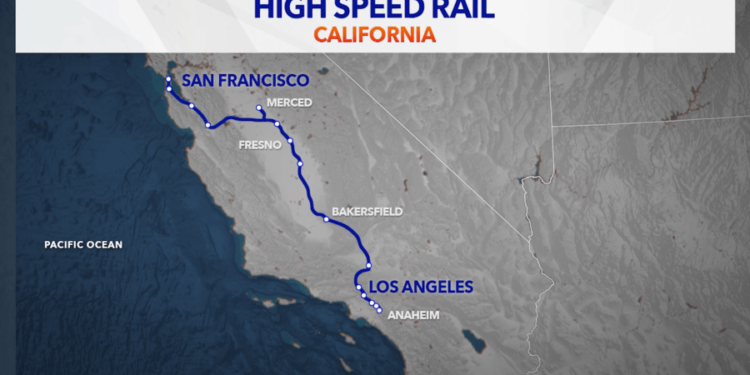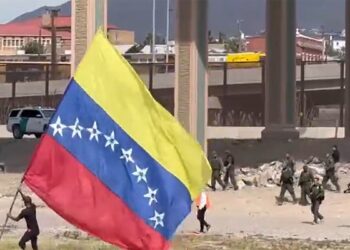High-speed rail in California is a good idea. Unfortunately, it’s being executed in a terrible fashion. The Trump Administration is correct to point out that the money isn’t being spent very well—because it’s not, and we know it. We’ve known it for years.
The original idea of the high-speed rail line in California was to make a run from Los Angeles to San Francisco in less than three hours. That is a very attractive selling point. But two decades and roughly $15 billion of dollars later, we were in the middle of a boondoggle of bad decisions that is now light years from its original plan and seems to be getting worse.
Rather than a run from San Francisco to L.A., what we’re looking at is a high-speed run from Bakersfield to Merced. Look, Merced is a nice town. I like Merced. But not a lot of Angelenos are clamoring to get there, and certainly not to get there on a regular basis. So, this is problematic from the start.
I have ridden high-speed rail in France. I’ve ridden high-speed rail in Japan. It’s an excellent form of transportation and a terrific alternative to air travel. The trick is you have got to do it right. And that means it has to go from places where people want to go – to places where people want to go. This isn’t really rocket science.

In fact, that was part of the original pitch for this. We’re going to go from one city, L.A., to another, San Francisco, and these are both very popular places. That’s a good selling point. It hasn’t worked out that way.
So, what do we do? First of all, don’t walk away from it. High-speed rail in California was a good idea. It’s still a good idea. But let’s cut our losses.
This whole thing in the Central Valley is nonsense. It makes no sense economically. It doesn’t speak to the future of our state. It’s billions of dollars going to something that nobody particularly wants.

Let’s go back to the original idea: the L.A. to San Francisco run, which means taking it through land that is not easy to obtain. And that’s why we have eminent domain laws, in which the government can purchase—not steal—private property for the greater good. That is what eminent domain is intended for, and this is precisely the sort of situation where it is necessary.
Is a high-speed rail line for California going to happen any time soon? Obviously not. Is it a good idea? Yes, as long as we do it right.

It’s been two decades since this idea was first floated, and now look where we are. But if we go back and start again, at least we can get on the right track. It would be smart to start with the L.A. to Las Vegas run as a proof of concept—to show everybody how this can work and how, economically speaking, there are benefits from it. Then we can build out the L.A. to San Francisco run.







